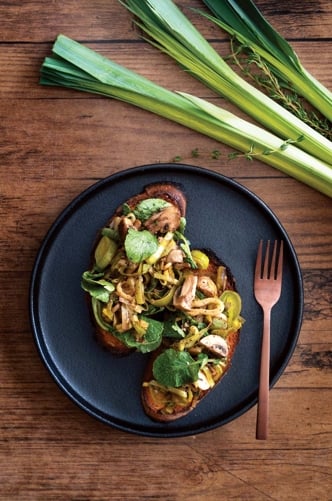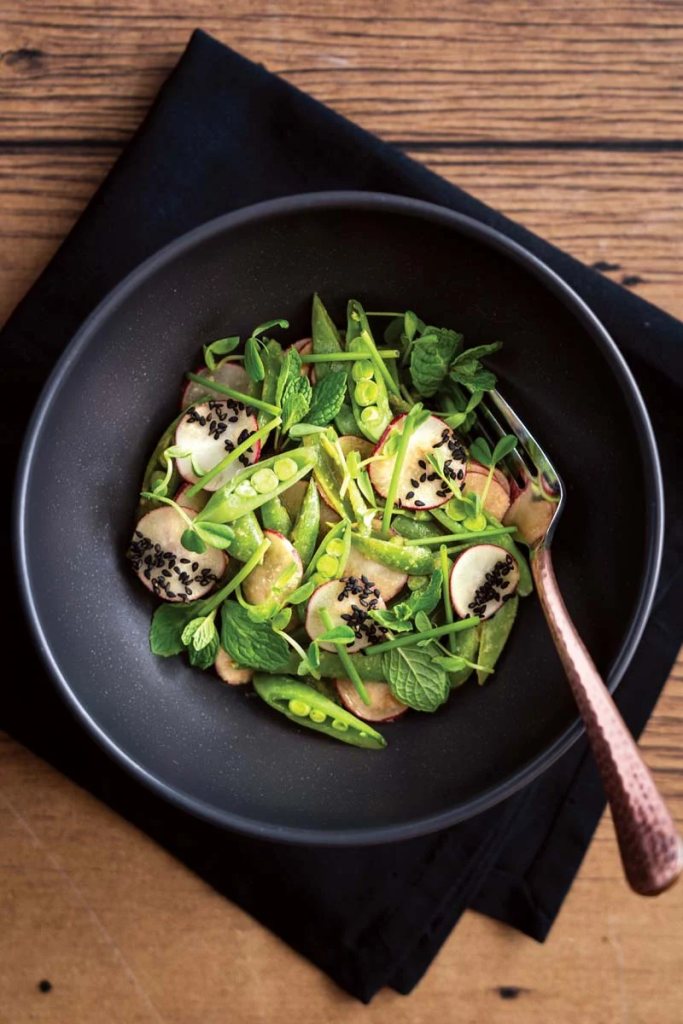More than ever, we’re starting to comprehend the link between the food we eat and how it affects the environment. It is believed that a diet low in meat and high in organic veggies is healthier for the environment and for our bodies.
Organic produce is cultivated without the use of soil-damaging pesticides, requires less space and water than animal farming, and provides a quick supply of nutrition. Regenerative farming systems, which are used to produce it alongside other crops, support sustainable agriculture, biodiversity, and soil nutrient uptake.
 Legumes that fix nitrogen, such lentils, peas, and chickpeas, have deep roots and need less watering and tillage than other types of plants. The nitrogen that these plants leave in the soil may be transferred to other plants when employed as a part of a crop rotation system. This reduces the need for fertilizer, which leads to efficient production and less residue in the soil and the food we consume.
Legumes that fix nitrogen, such lentils, peas, and chickpeas, have deep roots and need less watering and tillage than other types of plants. The nitrogen that these plants leave in the soil may be transferred to other plants when employed as a part of a crop rotation system. This reduces the need for fertilizer, which leads to efficient production and less residue in the soil and the food we consume.
 It matters where and when our food is grown. Just as choosing seasonal products differently may have a good effect on the environment and add more diversity to our meals, “shopping local” promotes the local economy and can result in lower transportation emissions.
It matters where and when our food is grown. Just as choosing seasonal products differently may have a good effect on the environment and add more diversity to our meals, “shopping local” promotes the local economy and can result in lower transportation emissions.
 What makes this magic work is that what is healthy for the environment, is beneficial for us as well. In contrast to leafy greens, which are a wonderful provider of vitamins C and K, legumes are a fantastic source of fiber and protein. A higher intake of vegetables, particularly leafy greens which are high in antioxidants, has been associated with a decreased risk of cancer.
What makes this magic work is that what is healthy for the environment, is beneficial for us as well. In contrast to leafy greens, which are a wonderful provider of vitamins C and K, legumes are a fantastic source of fiber and protein. A higher intake of vegetables, particularly leafy greens which are high in antioxidants, has been associated with a decreased risk of cancer.
Leek and Mushroom Tartines with Wilted Watercress

Choose your favorite whole wheat savory bread and stuff it with this delectable mixture of mushrooms and chives. This fast lunch or light snack has a peppery edge from the brilliant green watercress. This tasty combination is full of all the nutrients your body needs.
Herbal lentil Salad With Spinach and Peas
 The small black beluga lentils, which got their name because they looked like eggs, are great for salads since they keep their form nicely. Use French Puy lenses instead of beluga lenses if you can’t locate them; they offer comparable qualities. With lentils, baby spinach, peas, and a herb dressing, this salad celebrates the arrival of spring.
The small black beluga lentils, which got their name because they looked like eggs, are great for salads since they keep their form nicely. Use French Puy lenses instead of beluga lenses if you can’t locate them; they offer comparable qualities. With lentils, baby spinach, peas, and a herb dressing, this salad celebrates the arrival of spring.
Chilean Bison With Cinnamon and Chocolate
 In place of the red beans, mild pinto beans and ground black beans are combined with some smoky poblanos to make a substantial chili. This chili’s splash of chocolate brings out the lean bison’s mildly sweet flavor. Chili powder can be added gradually or in smaller amounts depending on how hot you want your chilies.
In place of the red beans, mild pinto beans and ground black beans are combined with some smoky poblanos to make a substantial chili. This chili’s splash of chocolate brings out the lean bison’s mildly sweet flavor. Chili powder can be added gradually or in smaller amounts depending on how hot you want your chilies.
Pea and radish salad In Combination With Miso Tahini Dressing
 This crisp spring salad has a lot of umami flavor thanks to the miso tahini dressing, which pairs nicely with the spicy horseradish and crunchy peas. The vivid flavor, crisp, fresh texture, and eye-catching appearance of this colorful salad will keep you going back for more.
This crisp spring salad has a lot of umami flavor thanks to the miso tahini dressing, which pairs nicely with the spicy horseradish and crunchy peas. The vivid flavor, crisp, fresh texture, and eye-catching appearance of this colorful salad will keep you going back for more.
Rhubai Boiled With Cinnamon, Mint and Ginger
 Perhaps nothing announces spring more deliciously than rhubarb. To bring out their flavors, the astringent vegetables that we typically think of as fruit are gently blanched. It is only awaiting the addition of different spices and ingredients to make it hotter.
Perhaps nothing announces spring more deliciously than rhubarb. To bring out their flavors, the astringent vegetables that we typically think of as fruit are gently blanched. It is only awaiting the addition of different spices and ingredients to make it hotter.





















